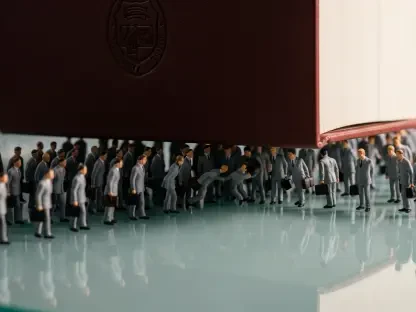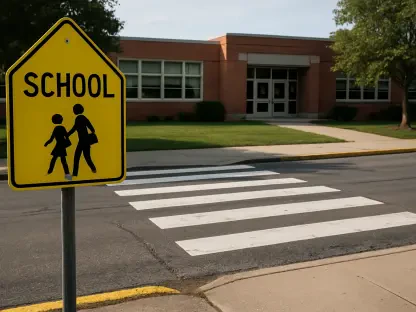As students across Texas settle into the current school year, a sweeping new law banning cellphones, electronic devices, and wearables in classrooms has sparked intense debate among educators, parents, and administrators. Introduced by Republican State Representative Caroline Fairly, this legislation seeks to eliminate distractions and improve classroom management by restricting personal device use during school hours. While the intent is to foster a focused learning environment, the policy has unearthed a complex array of challenges and opinions. Districts are grappling with how to enforce the ban, balancing the need for order with concerns over safety and educational utility. This situation raises critical questions about whether such a mandate genuinely benefits students or inadvertently creates more hurdles in an already evolving educational landscape shaped by technology.
Navigating Implementation Challenges
The rollout of the cellphone ban in Texas schools reveals a fragmented approach to compliance, with districts crafting varied policies to align with the state mandate. Some schools require students to surrender their devices at the start of the day, ensuring they remain inaccessible during lessons, while others permit storage in backpacks or lockers as long as the devices stay out of sight and unused. This inconsistency stems from the lack of specific enforcement guidelines in the legislation, leaving local administrators to interpret and apply the rules based on their unique campus needs. The Texas Association of School Administrators, through executive director Kevin Brown, has noted that opinions on the ban are far from unanimous. Many educators struggle with the logistics of monitoring compliance, especially in larger schools where overseeing hundreds of students becomes a daunting task, highlighting the practical difficulties of translating a statewide policy into day-to-day operations.
Beyond the logistical hurdles, the ban has ignited a broader discussion about the role of technology in education. For some educators, cellphones represent valuable tools that can enhance learning through research, collaboration, and access to educational apps, particularly in under-resourced schools where personal devices supplement limited classroom technology. However, others argue that these benefits are overshadowed by distractions, such as social media misuse or unauthorized recording, which disrupt lessons and strain teacher-student dynamics. The challenge for districts lies in striking a balance—adhering to the spirit of the law while addressing the diverse needs of their student populations. As policies continue to evolve, the varying approaches underscore a deeper tension between maintaining discipline and preserving access to tools that some view as integral to modern education, raising doubts about the ban’s long-term viability.
Balancing Safety and Accessibility
One of the most pressing concerns surrounding the cellphone ban is its potential impact on student safety, particularly in emergency situations. Parents and some administrators worry that restricting device access could impede critical communication during crises, such as school lockdowns or natural disasters, when students might need to contact family or authorities. In response, certain districts have adopted a compromise often described as “out of sight, but not out of reach,” allowing students to keep phones nearby but unused unless an urgent need arises. This approach aims to mitigate risks while still curbing everyday distractions. However, as Kevin Brown has pointed out, even this middle ground poses challenges—mass texting during an emergency on a sprawling campus could overwhelm communication channels, creating chaos and hindering effective crisis management by school officials.
Adding to the safety debate is the question of whether a blanket ban adequately accounts for the diverse environments of Texas schools. Urban campuses with robust security systems may face different risks compared to rural schools with limited resources or slower emergency response times. Critics argue that a one-size-fits-all policy fails to address these nuances, potentially leaving some students more vulnerable. Meanwhile, supporters of the ban contend that reducing device use minimizes non-emergency distractions that could exacerbate chaotic situations, such as rumors spreading via social media during a crisis. This dichotomy reflects a broader struggle to reconcile the protective intent of the policy with the practical realities of ensuring student well-being, leaving districts to navigate a delicate balance between compliance and adaptability in safeguarding their communities.
Weighing Local Control Against State Mandates
The tension between local autonomy and statewide directives forms another critical layer of the cellphone ban discourse in Texas. Historically, educational policies have often leaned toward local control, allowing districts to tailor solutions to their specific demographics and challenges. While the Texas Association of School Administrators generally advocates for such flexibility, there is acknowledgment that a uniform state policy can provide a consistent framework for addressing widespread issues like classroom distractions. However, this top-down approach has led to misunderstandings, with some parents and community members mistakenly attributing the ban to district decisions rather than state legislation, fueling frustration and criticism at the local level. Administrators find themselves in the difficult position of defending a mandate they did not create while striving to adapt it to their unique contexts.
This dynamic reveals a broader question about the efficacy of statewide mandates in addressing nuanced educational challenges. Districts must balance compliance with the need to respond to local feedback, often revising policies mid-implementation to address unforeseen issues or resistance. For instance, some schools have faced pushback from parents who view the ban as an overreach, arguing it limits their ability to stay connected with their children during the school day. Others see the state’s role as a necessary step to enforce consistency across a diverse educational landscape. As administrators work to clarify the origins and intent of the policy, the ongoing dialogue underscores the complexities of governing education in a state as vast and varied as Texas, where a single rule can elicit widely different reactions and require tailored responses to maintain trust and effectiveness.
Reflecting on Broader Implications
Looking back, the introduction of the cellphone ban in Texas classrooms stirred a multifaceted debate that touched on discipline, safety, and the evolving role of technology in education. Districts wrestled with enforcement, often adopting varied strategies to align with the mandate while addressing local concerns. The split in opinions among educators and parents—ranging from viewing devices as distractions to valuing them as learning tools—highlighted the absence of a clear consensus on the policy’s impact. Safety considerations added another layer of complexity, as the need for emergency access clashed with the potential for chaos during crises. Moving forward, the focus should shift to evaluating the ban’s effectiveness through data on academic performance and incident response times over the coming years. Districts might benefit from collaborative forums to share best practices, ensuring policies remain adaptable. Ultimately, refining this mandate will require ongoing dialogue to balance order with the undeniable presence of technology in modern learning environments.









